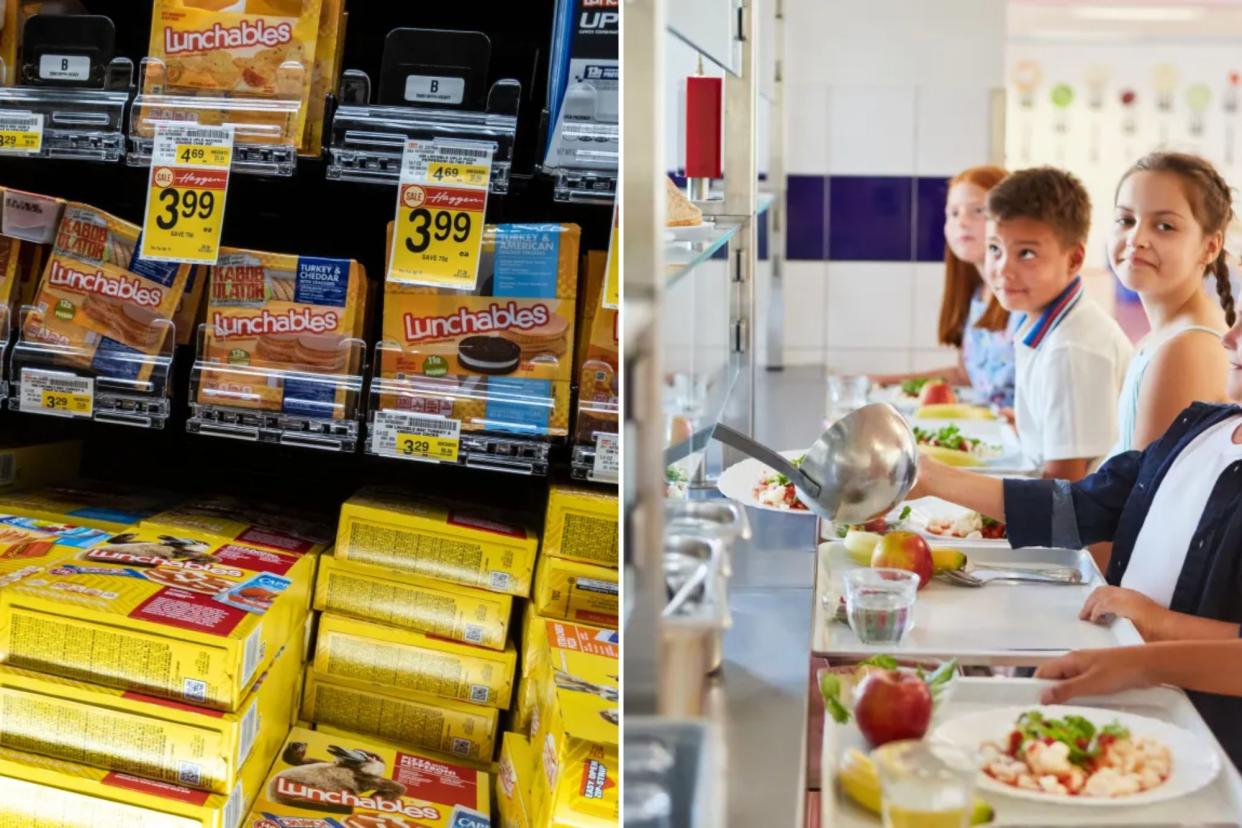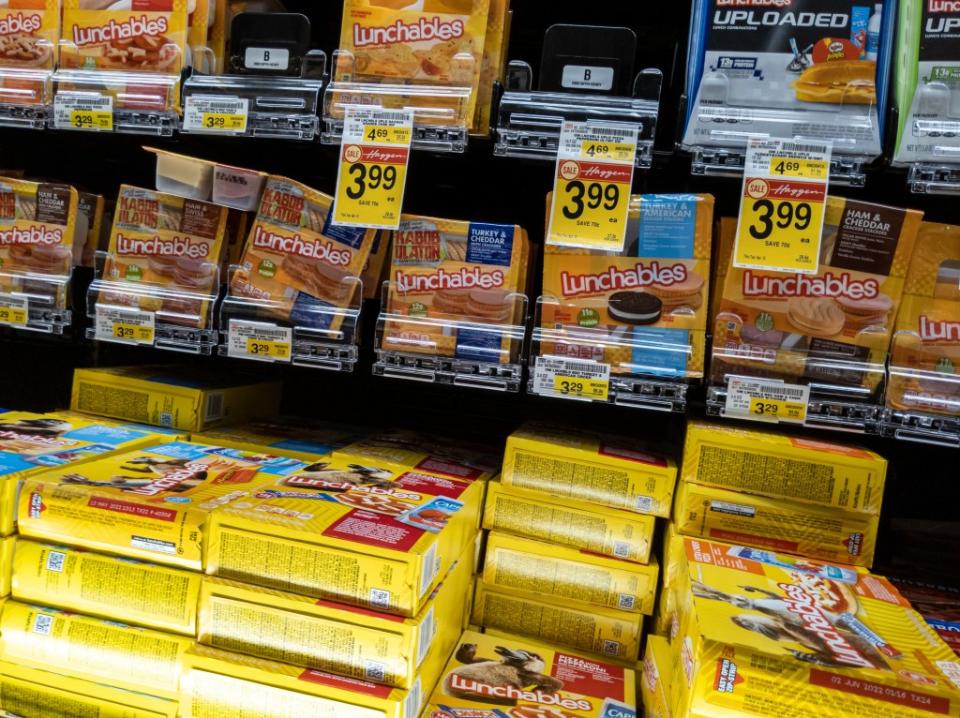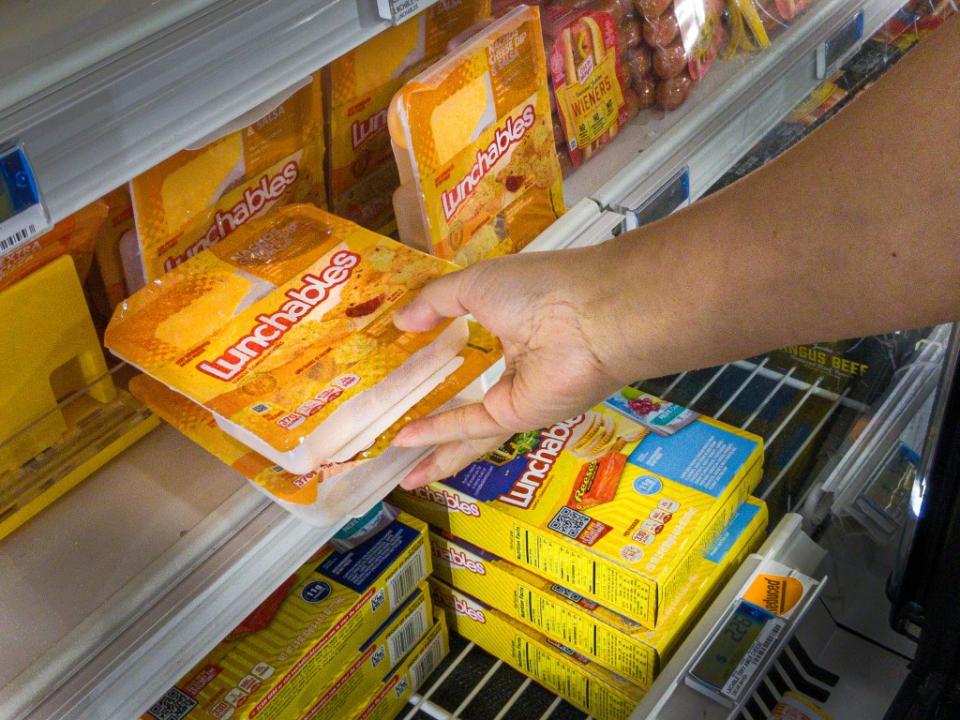Beloved lunch staple ‘should not be allowed on menu’ in schools due to ‘concerning’ chemicals: watchdog

They’re acting salty.
Lunchables should be banned from school lunchrooms, according to Consumer Reports.
The prominent advocacy organization is petitioning the USDA on grounds that sodium counts in the fun-to-eat meal kits is simply too high for tykes, among other safety concerns.

Specifically, the buyer-backing non-profit is going to battle with the federal adjudicators of the school lunch program over specially-formulated versions of the ultra-processed meal item made by manufacturer Kraft Heinz, now being served to kiddies in cafeterias and cafetoriums across the country.
“Lunchables are not a healthy option for kids and shouldn’t be allowed on the menu as part of the National School Lunch Program,” said Brian Ronholm, Consumer Reports’ director of food policy.
“The Lunchables and similar lunch kits we tested contain concerning levels of sodium and harmful chemicals that can lead to serious health problems over time. The USDA should remove Lunchables from the National School Lunch Program and ensure that kids in schools have healthier options,” he continued in a written statement.
Kraft Heinz began supplying the kits to the USDA’s National School Lunch Program, or NSLP, last year — after working to create special versions that met federal nutrition guidelines, CNN reported.
But in the process, watchdogs at Consumer Reports say, the global food conglomerate wound up leaving children at risk — tests conducted showed higher amounts of sodium than in the grocery store versions, for example.

“A specialized recipe that incorporates more protein and whole grains to keep kids powered throughout the day” was used, Kraft Heinz said in a statement, also touting “reduced saturated fat and sodium, and an increased serving size.”
That increased serving size meant, for example, that a Lunchables pizza kit with 510 mg of sodium in the supermarket now had 700 mg in the school lunch version. A turkey and cheddar kit packed a whopping 930 mg of sodium, a considerable increase from 740 mg in the store-bought version.
Children 4-8 should limit their intake to about 1,500 mg daily, according to the Mayo Clinic.
Too much sodium in your diet can lead to high blood pressure and hypertension, Consumer Reports warned.
The decision to bring in Kraft Heinz on the Lunchables project appears to conflict with the USDA’s proposed changes to nutrition guidelines for the school lunch program.
Those changes would see added sugars, such as those found in most juices, and reduced sodium levels in school lunches. The transition would take place over a period of several years.

Consumer Reports also expressed concern over the presence of a range of additives found in these types of ultraprocessed foods, toxic metals and “everyday chemicals” in a host of store-brand kits, including Lunchables, Oscar Mayer, Armour LunchMakers, Good & Gather and Greenfield Natural Meat Co. They reported finding lead, cadmium or both in all of the kids — though they did point out that these levels were below federal limits. Sodium levels appeared to be universally high.
There is no safe level of lead for children, according to the US Centers for Disease Control and Prevention.
Cadmium, found in soil, makes its way into the food supply regularly. According to the World Health Organization, it has been linked to kidney disease, cancer and other ailments.

